22 Fruits That Start With D
HurryTheFoodUp is reader-powered. If you click through using links on our site we may earn a small commission at no cost to you.
Stop scrolling.
Can you rattle off the names of fruits starting with the letter D? How many names did you get?
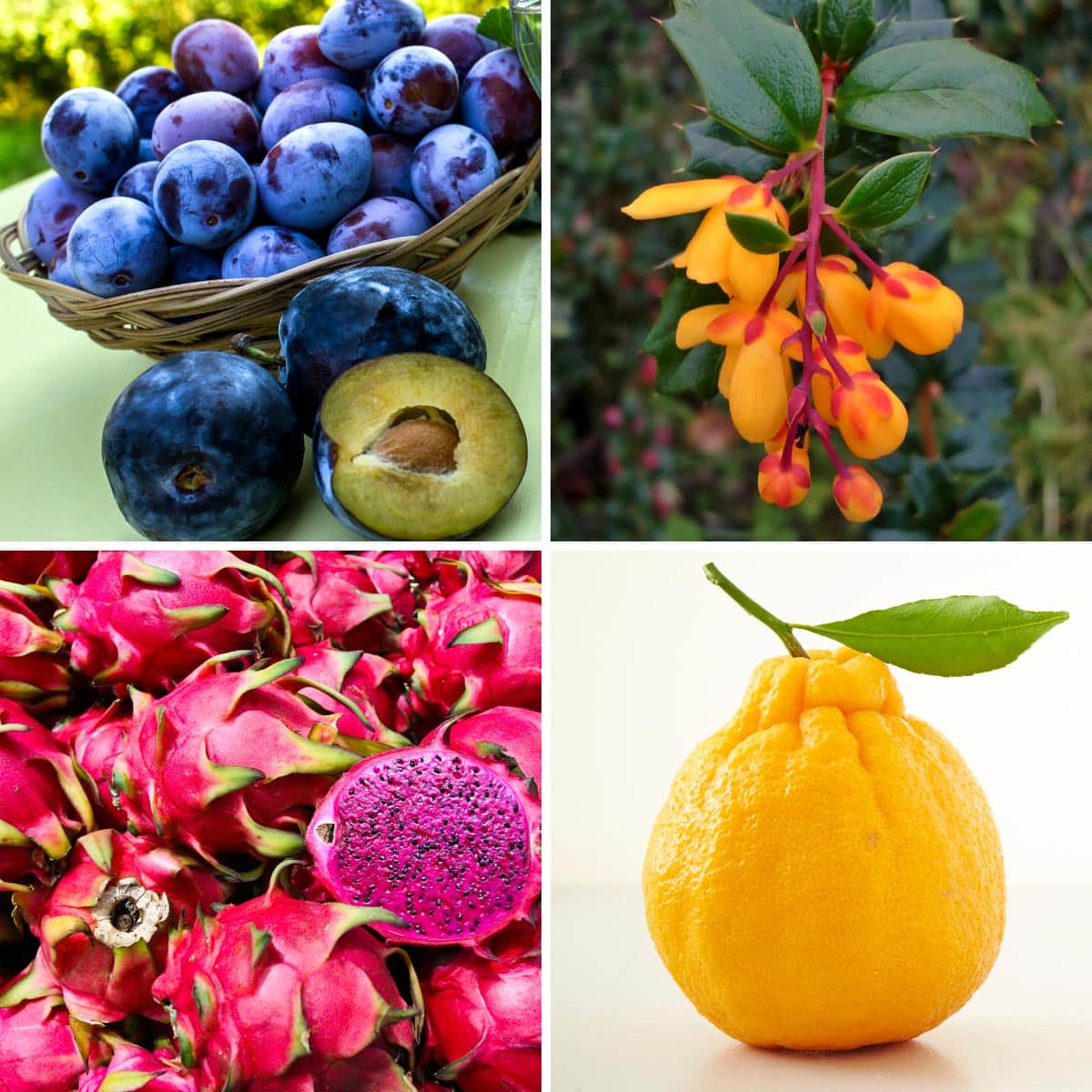
On the first pass, when I tried this trick with the letter A, I got a dismal 6. But I am a pro now, quickly making my way down the alphabet!
But, apart from just giving me tools to trounce the opposition in the next pub quiz, it has also been a boatload of fun!
When we started on this Alphabet foods journey, little did I realize how many new ones I will end up hearing about for the first time ever! I mean, “double coconut”? Seriously? And what is a Dekopan?
Whatever they are, they are most definitely interesting. (And funny how many are from Oz, hey?)
This brings me to the question: what counts as a fruit in this list?
Well, the old definition of “if it has seeds, it is a fruit”, is the tenet I am going by. Also, very simply, fruits are borne by flowers. So, if it owes its origin to another part of a plant, then it is a veg.
Simples!
So let’s get started on the list of fruits starting with D!
And see how many fruits starting with the letter D I can list.
Dabai fruit
Dabai fruit (scientific name Canarium odontophyllum) is a seasonal fruit native to the islands of Borneo. The fruits are available between the months of October and January.
The fruit is glossy and black in color, with a yellow flesh and an edible seed. Dabai can be eaten raw or blanched or cooked into a sauce. It is also eaten with sugar, salt, or even soy sauce!
The fruit is so special to the locals that they even have an annual festival called ‘Pesta Dabai’ to celebrate it!

Damson Plums
Damson plums (scientific name Prunus insititia) are fruits native to Great Britain. In fact, its name is derived from Middle English – proof positive that this plum has been around for a while!
While not exactly filling the fruit aisles at the supermarket, you might be more familiar with the damson fruit in jams, fruit preserves, and even gin.
Unlike the other varieties of plums, Damson Plums have a rich sweet flavor and as well as being highly astringent.
Damsons are a small fruit, with a hard stone in the middle, and are usually harvested between late August and September/October.

Date
Did you know that dates (scientific name Phoenix dactylifera) have been around since the days of the Indus Valley civilization? This hardy plant has been in existence for over 50 million years!
Date, the fruit of the date palm trees, is cultivated predominantly in north Africa, the Middle East, and South Asia. Date palms are emblematic of the Middle East and are used extensively in the local cuisine.
The raw fruits of the date have a mild, sweet taste but we are more familiar with the zhuzhed-up versions, which are glazed in sugar syrup and stuffed with cashew nuts and almonds.
This sweet fruit is also a chief ingredient in desserts in Middle Eastern and Indian cuisines.

Date Plum
Not to be confused with the regular dates, date plums (scientific name Diospyros lotus) also known as the Caucasian persimmon, are a delicious fruit native to southeastern Europe and southwest Asia.
The fruit is called date plum as apparently the taste of this fruit is rather like a mix of dates and plums! Yum! The Ancient Greeks called these “God’s fruit”! How about that?!
Date plums are quite sweet and tart to taste and are usually eaten dried.
Davidson’s Plum
If you have watched Masterchef Australia, (or are from Oz!) you would be familiar with this fruit. Davidson’s Plum (genus Davidsonia) is found exclusively in Australia and refers to not one, but three rainforest trees.
Davidson’s plums look quite similar to the European plums but unlike them do not have a stone inside.
The flesh of the fruit has a burgundy hue and a sour taste. It is used in jams, sauces, wine, and ice cream.
DangleBerry
Dangleberry (scientific name Gaylussacia frondosa) is also known blue huckleberry. It is a small shrub that grows in eastern USA. The plant produces small edible fruit that are bluish-black like blueberries or sometimes even white.
The dangleberry plants are essential to the local ecosystem as they are birds, bees and butterflies friendly and quite attractive to wildlife.
Darwin’s Barberry
Did you know Darwin’s Barberry (scientific name Berberis darwinii) is named so, in honor of Charles Darwin because he discovered the plant in South America in 1835?
Darwin’s Barberry is a flowering evergreen thorny shrub that is native to South American countries Chile and Argentina. The plant produces small purplish-black fruits that are quite acidic in flavor.
The prehistoric native people of Patagonia consumed the Darwin’s Barberries over a millenia ago.
In the UK, the plants make for highly popular hedging shrubs, while in the New Zealand, the plant is considered a pest, as it is highly invasive and destructive to native ecosystems!
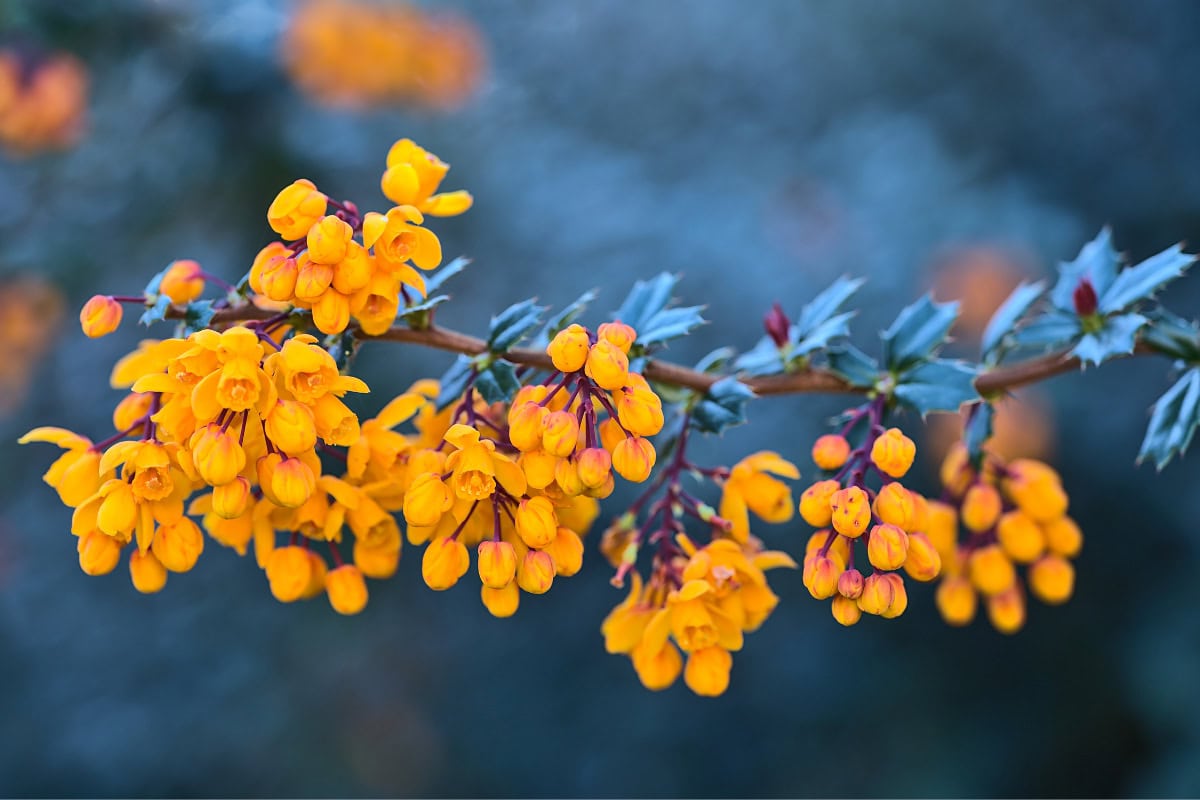
Dead Man’s Fingers
Not a very appealing name now, is it? Imagine walking into Sainsbury’s, asking for a punnet of Dead Man’s Fingers?!
Then again, look at the picture of these poor fruits in nature and they do look rather like cadaverous, like long and purplish sausages.
Also known as blue bean plant and blue sausagefruit, the Decaisnea is native to Asia, such as China, Nepal and Myanmar. The fruit is quite tasty, tasting ather like a cucumber.
Dekopon
Dekopon or Shiranui is a seedless variety of satsuma orange, a hybrid variety developed in Japan. It is a small fruit that is quite acidic in nature.
This is why they are left to their own devices for anything from 20 to 40 days post harvest, in which time the fruits lose their acidity and increase in sweetness.
These fruits are very popular in their country of origin, Japan, as well as in Brazil, South Korea and Azerbaijan.
In fact, the plants have been adapted successfully to the Brazilian climate and are cultivated in the highlands of Sao Paolo state.

Desert Lime
Desert Lime (or citrus glauca) is, as name suggests, a citrus fruit native to Australia, especially South Australia, Queensland and New South Wales. The fruit has a very strong flavor, like a lime.
It is a hardy plant that is heat, cold, drought and salinity resistant. Traditionally found in the bushlands, desert limes are used to make marmalades, drinks and candied peels.
Desert King Fig
A striking fruit with yellowish green skin and a bright red flesh, the Desert Fig (scientific name Ficus carica) is a type of fig found predominantly in the Pacific Northwest.
Thought to come from a fig tree found in 1930 near Madera, in California, the Desert Fig is a highly prized fruit.
The Desert King figs are rich and delicious – the fruits are very sweet, tasting like a cross between a strawberry and a mulberry.
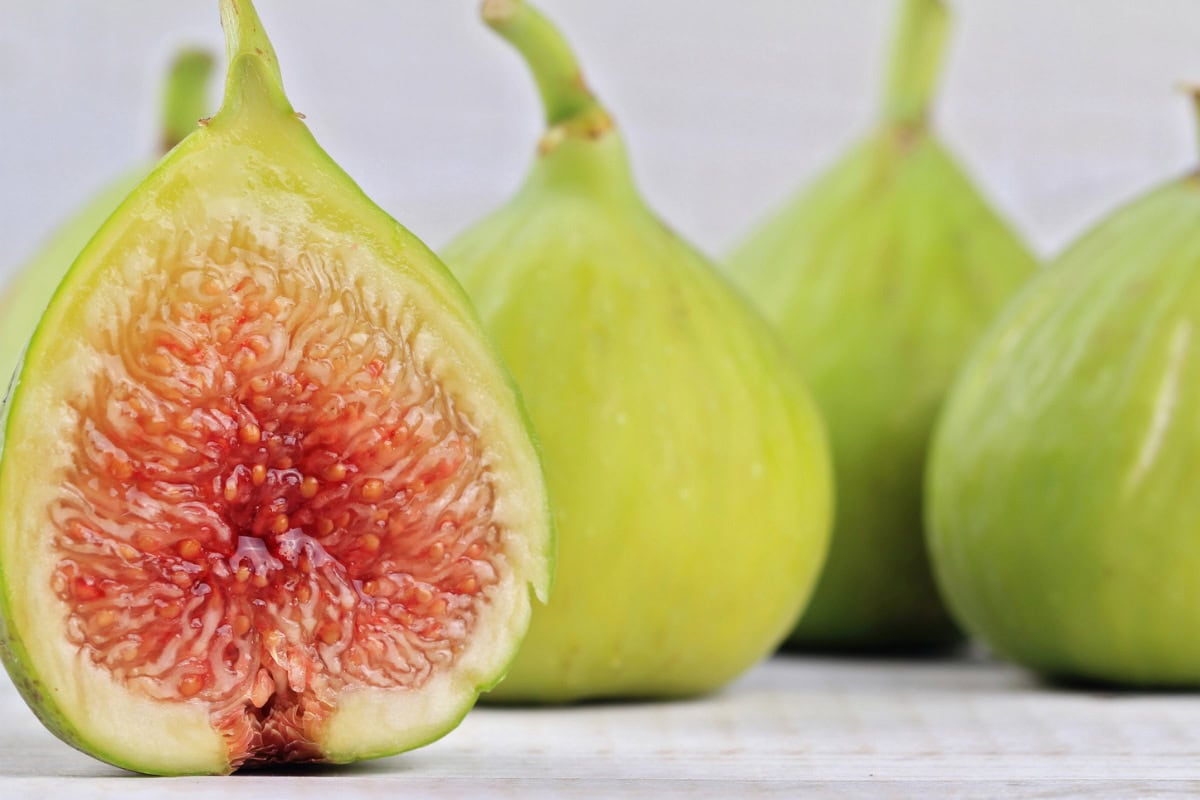
Dewberry
Dewberries (genus Rubus) are small berries related to blackberries. Soft, sweet and less seedy than blackberries, the tender dewberries are rather difficult to pick.
Though considered a weed, dewberries are considered beneficial. These plants are found commonly across the Northern Hemisphere.
Dewberries are used to make jams, pies and cobblers. The leaf of the Dewberry plant is used to make herbal tea.

Desert Quandong
Santalum acuminatum, the desert quandong, is a plant that is native to Austalia, in the arid region of the central desert and the southern parts of the country.
Also known as native peach, the quandong fruit is one of the most famous foods of the bush.
The quandong fruit is used in pies and in fruit juices. It’s flavor profile is similar to that of a rhubarb or a peach and so is used in both sweet and savory foods. In foreign markets, it has gained popularity as an exotic fruit.
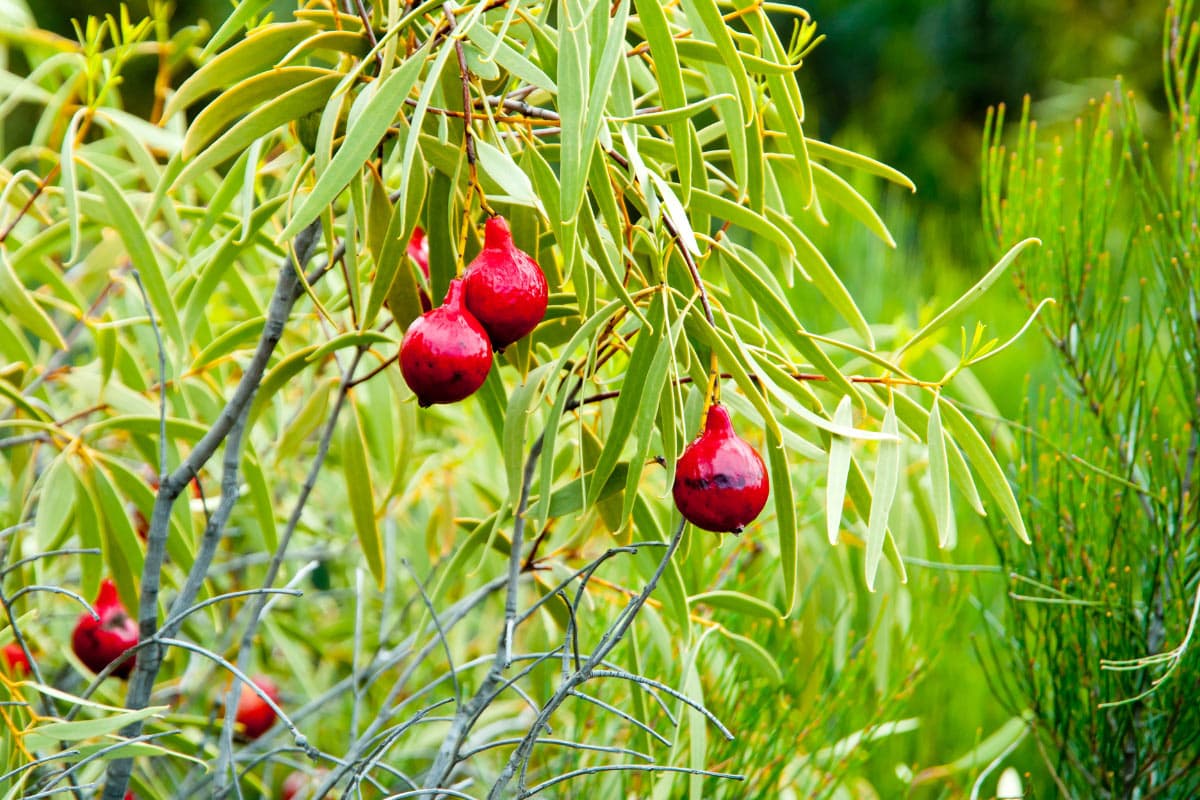
Dinosaur Egg or Pluots
Dinosaur eggs or pluots are a hybrid fruit of plums and apricots. Cross-pollinating the two fruits results in pluots with a variety of unique flavors, taking on varying percentages of taste profiles from both fruits.
Why are pluots called Dinosaur eggs though? Funnily enough, the skin of the fruit is colourful and spotted, which apparently brings to mind dinosaur eggs!
Dino eggs are used in various dessert preparations such as pies, tarts and crumbles.

Dinosaur Melon
Dinosaur melon (of the species Cucumis melo) , also known as dino egg melon or gaya melon is a small variety of honeydew melon.
Originally developedi n Japan, it is now found in other parts of the world such as China, southern California, Mexico and South America.
Dinosaur melons are small to medium-sized fruits that have a mildly sweet flavor. The fruit is rather unique to look at – ivory coloured skin with green streaks and white inner flesh – and is quite popular due to it.
Discovery Apple
Of the species Malus domestica, Discovery Apple is a variety of dessert apple.
Originally cultivated by British farmer George Dummer in in 1949, the Discovery Apple was first introduced to the market in 1962, by a Sussex nurseryman called Jack Matthews.
As a nod to the original developer, the Discovery was first called ‘Dummer’s Pippin’. The Discovery apple is a small to medium fruit, with a sweet, lightly acidic flavor, kind of like a strawberry.
Double Coconut
Double coconut, sea coconut or coco de mer (scientific name Lodoicea) belongs to the palm family. It grows extensively in the Indian Ocean islands, especially Seychelles, Maldives and Madagascar. It is also known as the Maldive coconut.
The Double coconut palm trees are used as ornamental trees and its fruit is not consumable in the traditional sense.
But in traditional Chinese medicine, the double coconut is valuable, as it is used to treat abdominal pain, inflammation, nausea etc.

Dracontomelon
Dracontonmelon (scientific name Dracontonmelon duperreanum), refers to a family of flowering plants, found in South East Asia.
The fruit of the plant is eaten by the people of China, Cambodia and Vietnam, where the plant is commonly found.
Dracontomelon fruit is used as a souring agent in Vietnamese cuisine and as a candied treat, popular among the youth.
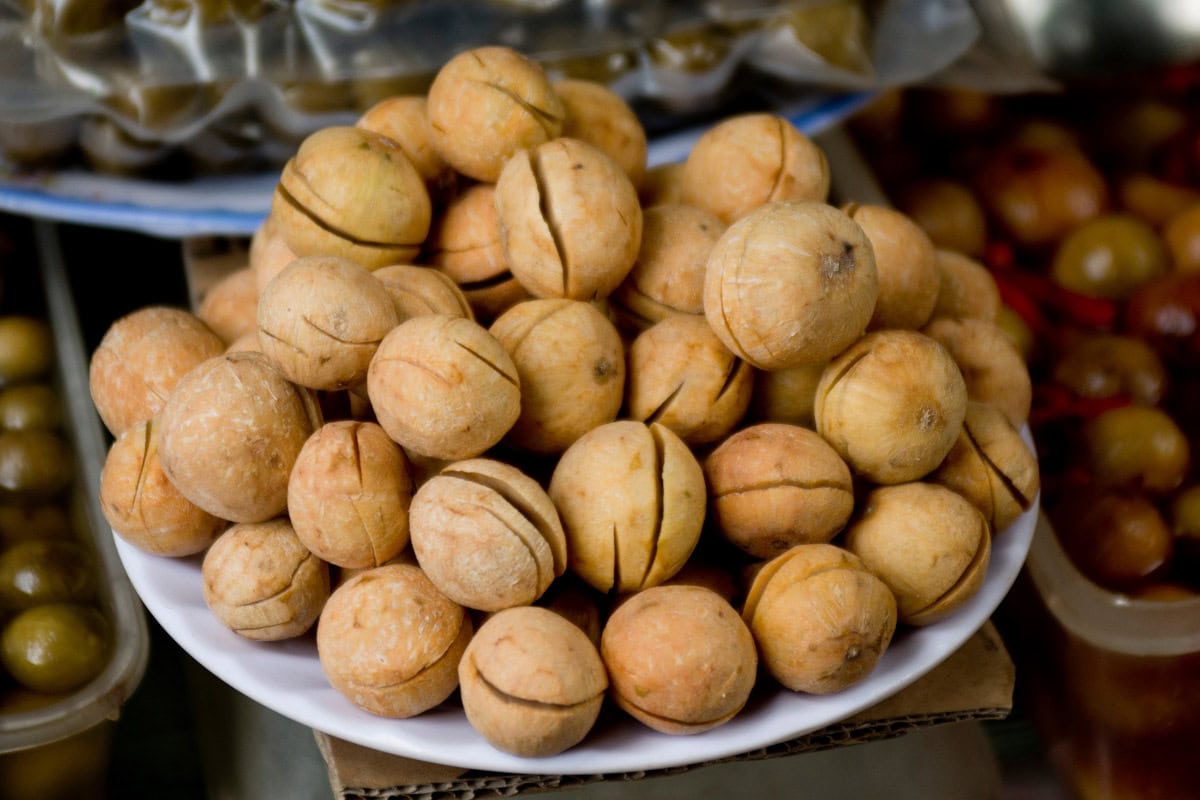
Dragon Fruit
Dragon fruit (from the family Selenicereus) also called pitaya or a strawberry pear, refers to the fruit of a type of cactus plant found in the Americas. The name comes from the rough texture of the skin of the fruit.
Dragon fruit consists of many varieties, some sour and some sweet. The fruit is native to southern Mexico, El Salvador, Guatemala and Costa Rica.
The inner flesh of the fruit is comparable to that of the kiwi fruit, because of the seeds present in it.
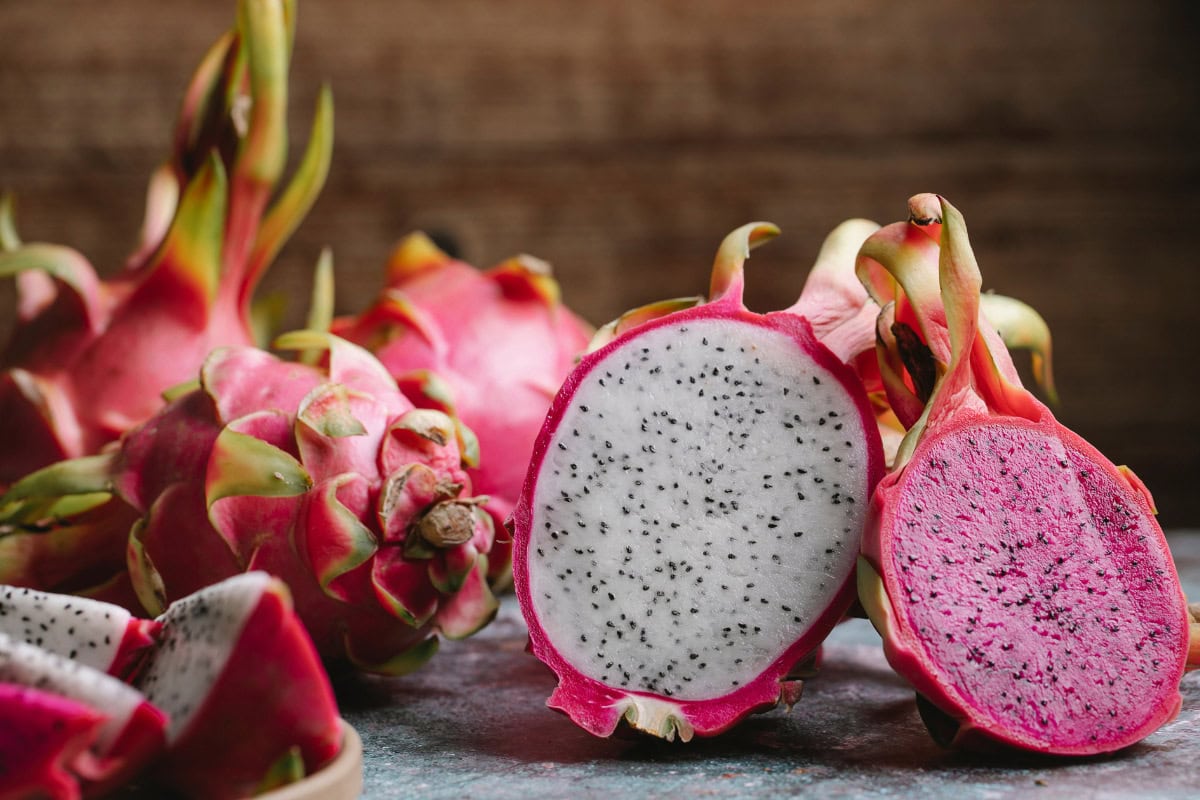
Duku fruit
Duku (scientific name Lansium parasiticum) is also known as langsat and lanzones, is the fruit of a tree from the mahogany family. The plant is native to Southeast Asia.
The fruit has a texture akin to grapes when eaten raw and is also used to make fruit syrup. The fruits have a flavor like grapefruit, both sweet and tart.
Duku is an excellent source of essential vitamins and minerals, like Vitamin A, Vitamin B, Vitamin C, iron, phosphorous etc.

Durian
If there ever was an exotic fruit whose fame had spread far and wide, that would be the durian fruit. The marmite of fruits, the tropical fruit durian invokes no ambivalence.
Called the ‘smelliest fruit in the world’, durian has over 400 varieties!
Durian (scientific name Durio zibethinus) is called the king of fruits and is hugely popular in Southeast Asia, where it is used in both sweet and savory dishes.
It has a strong smell that can linger for days! No wonder many international hotels in the region have banned this fruit from their premises!
Check out how people describe the taste of durian! 🙂

Dusky Pear
Dusky pear (scientific name Pyrus phaeocarpa) is a variety of pear closely related to the Himalayan pear.
Dusky pear is native to China and the fruit trees are covered in beautiful flowers. Which makes them highly sought after as ornamental trees.
22 Fruits That Start With D
The comprehensive list of 22 fruits that start with the letter D. From Dates to Durian, we got you covered!
- Dabai fruit
- Damson Plums
- Date
- Date Plum
- Davidson’s Plum
- DangleBerry
- Darwin’s Barberry
- Dead Man’s Fingers
- Dekopon
- Desert Lime
- Desert King Fig
- Dewberry
- Desert Quandong
- Dinosaur Egg or Pluots
- Dinosaur Melon
- Discovery Apple
- Double Coconut
- Dracontomelon
- Dragon Fruit
- Duku fruit
- Durian
- Dusky Pear
If you’re interested, you can also check out our list of vegetables that start with D, or branch out and check out the whole list of foods starting with D, or fruits that start with B!
So here it is! My comprehensive list of D fruits! Tell me, were there any you had never heard of? Which fruit starting with D made you think I was making it up and no such thing existed?
And, most importantly, have you ever smelled a durian? How was it?
Tell me in the comments section!

